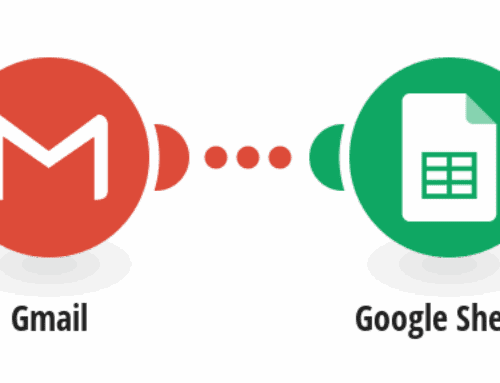Enhance Your Smart Home Experience with TapHome and iOS Push Notifications
Introduction to Smart Home Automation
In today’s fast-paced world, smart home technology has become an essential aspect of modern living. From controlling lights to managing security systems, smart automation significantly simplifies our lives. But what if we could take it a step further? Imagine receiving instant alerts on your iOS device every time a smart device in your home is activated or interacts with another device. This is where the power of integrating TapHome with Apple iOS push notifications comes into play.
The beauty of smart homes lies in their ability to adapt and respond to our needs seamlessly. With the integration of push notifications, this efficiency is maximized, allowing you to stay informed about your home no matter where you are. Whether it’s a notification about your garage door being left open or an alert of unusual activity detected by security cameras, push notifications ensure you’re always in the loop.
What is TapHome?
TapHome is an innovative home automation platform that offers extensive control over various smart devices. It acts as the nucleus of your smart home ecosystem, enabling different devices to communicate and function harmoniously. The versatility of TapHome means it can be integrated with numerous smart gadgets, enhancing your home’s intelligence level.
With TapHome, users can automate daily routines, optimize energy consumption, and enhance security measures. Its intuitive interface and robust compatibility make it a favorite among tech enthusiasts and homeowners looking to embrace smart technology. The integration with Apple iOS devices for push notifications is one of its many remarkable features.
Importance of Push Notifications in Smart Homes
Push notifications have revolutionized the way we interact with our smart homes. They serve as real-time messengers, providing updates and alerts directly to your mobile device. For busy individuals, this feature is a lifesaver as it ensures they remain informed and can respond to any developments swiftly.
In a smart home setup, push notifications can enhance security by alerting you to any suspicious activity, such as a motion detector going off or an unexpected change in temperature. Additionally, they can improve convenience by letting you know when family members arrive home or appliances need attention. Essentially, push notifications transform your smartphone into a control hub for your smart home.
Setting Up TapHome with Apple iOS Notifications
Integrating TapHome with Apple iOS push notifications is a straightforward process. To begin, ensure your TapHome device is properly configured and connected to the network. Following that, download the relevant application from the Apple App Store and log in using your credentials.
Once logged in, navigate to the settings menu within the app, where you’ll find options to enable push notifications for different device interactions. Customize these settings according to your preferences, ensuring you only receive alerts that matter most to you. This personalization helps in preventing notification fatigue, keeping your alerts relevant and actionable.
Benefits of Receiving Push Notifications
The prime advantage of receiving push notifications through your iOS device is the peace of mind it offers. Knowing that you will be alerted in real-time allows you to make informed decisions quickly without constantly checking your home automation system. This can be particularly beneficial when you’re away from home or have a busy lifestyle.
Moreover, these notifications can help you optimize energy usage. For instance, you can receive alerts about lights being left on in unoccupied rooms or changes in environmental conditions, allowing you to adjust settings remotely, thus saving energy and reducing utility bills.
Potential Challenges and How to Overcome Them
While push notifications provide significant benefits, they may occasionally face challenges such as connectivity issues or notification overload. Connectivity problems often arise due to network issues or software bugs, which can usually be resolved by ensuring all devices are up-to-date and functioning on a robust network.
Notification overload, on the other hand, is manageable by refining your notification preferences. Limiting alerts to high-priority interactions will help reduce the clutter and ensure that you receive only essential notifications, improving overall user experience.
Conclusion
Integrating TapHome with Apple iOS push notifications is a game-changer for anyone invested in smart home technology. Not only does it augment your home’s intelligence, but it also provides a layer of convenience and security that is hard to beat. By staying informed about device interactions, you gain better control over your home environment, making life easier and more efficient.
Incorporating these technologies into your daily routine not only enhances convenience but also promotes a proactive approach to home management. Embrace this integration, and you’ll soon wonder how you ever managed without it.
Frequently Asked Questions
How do I start using TapHome with iOS push notifications?
First, set up your TapHome system and ensure it is connected to the internet. Download the corresponding app from the Apple App Store and configure your device settings to allow push notifications.
Are there any additional charges for using iOS push notifications with TapHome?
No, TapHome does not charge extra for enabling iOS push notifications. However, make sure your data plan covers mobile notifications to avoid unexpected costs.
Can I customize which notifications I receive?
Yes, within the TapHome app settings, you can select which interactions trigger notifications. This customization lets you manage the amount and type of information you receive.
Will push notifications work if my phone is in Do Not Disturb mode?
Generally, push notifications will follow your device’s Do Not Disturb settings. You can modify settings to allow certain notifications to bypass this mode if needed.
What should I do if I’m not receiving push notifications?
Check your internet connection and app settings to ensure notifications are enabled. Also, verify that your device software is updated to the latest version available.









